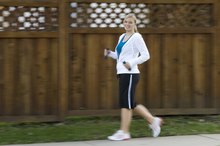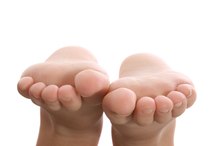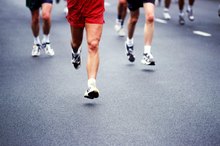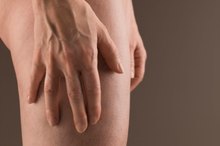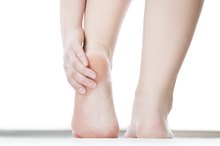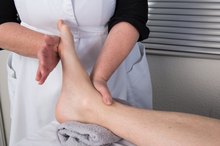Pronation Foot Exercises
Pronation, or flattening of the arch of the foot, occurs every time you take a step. Overpronation, or excessive flattening of the arch of the foot, can lead to poor posture and pain in the foot, leg, hip, and spine. Exercise can strengthen the foot muscles, correct poor foot bio-mechanics, and reduce the risk of injuries, such as shin splints, plantar fasciitis, and iliotibial band syndrome. Perform such exercises correctly and consistently, start slowly, and gradually increase the intensity.
Towel Toe Grab
Sit with good posture and both feet on the floor in front of you, a small towel under your right foot. Curl your toes and grab the towel between your toes and forefoot, while raising the arch of your foot off the floor. Perform 10 repetitions, relaxing your toes between reps. Switch to the left foot for 10 reps. This exercise strengthens the muscles that raise the longitudinal arch of the feet.
Short Foot
Exercises to Increase Hip Size
Learn More
The short foot exercise is recommended by postural expert Vladimir Janda in his book "Muscle Function Testing," to build strength, stability and endurance in the muscles and tendons that support the arch. Sit with good posture in a sturdy chair with both feet on the floor, your toes facing straight forward, and your knees bent to 90 degrees. Inhale, contract the muscles on the bottom of your right foot and lower legs to raise the arch of your foot without curling your toes. This position is called the short foot position. Hold this isometric muscle contraction for six seconds, then exhale and relax. Turn your lower leg slightly outward, inhale and again come to the short foot position. Hold for six seconds, exhale and relax. Next turn your lower leg inward, and perform another isometric contraction for six seconds. Repeat the identical series of exercises with your left foot. Reposition your feet an inch farther away from the chair, and perform repetitions in the straight, outward and inward ankle positions with both feet. After each series, inch your foot forward until you perform a total of five series with each foot. Sliding your feet farther away from the chair with each rep works the muscles at slightly different angles.
Pool Running
Stand in the shallow end of a pool. Start at one end and sprint to the other end, pushing off with your feet as hard as you can with each step. The water adds resistance, so your push-off stresses the muscles of the lower leg and foot more than ground running. For best results in strengthening the structures that support the arch, the water should be between waist- and chest-deep.
Sand Running
How to Increase Flexibility in My Big Toes
Learn More
Walking or running in the sand targets the foot and leg muscles. The foot sinks into the soft surface, so you have to push off harder than when on solid ground, thus forcing the muscles that compose the arch of the foot to work harder. Start by walking, then progress to jogging, then sprinting, then finally to sprinting barefoot.
Related Articles
References
- Dynamic Chiropractic: Propriosensory Methods for Pelvic Stabilization
- Cascade Orthotics: Plantar Fasciitis
- "Muscle Function Testing"; Vladimir Janda; 1983
Writer Bio
Dr. Donald A. Ozello, D.C., is the owner and treating doctor of chiropractic at Championship Chiropractic in Las Vegas, Nevada. He is a writer for MyHealthZine.com, The Las Vegas Informer, SpineUniverse.com, "OnFitness Magazine" and various other print and online publications.


